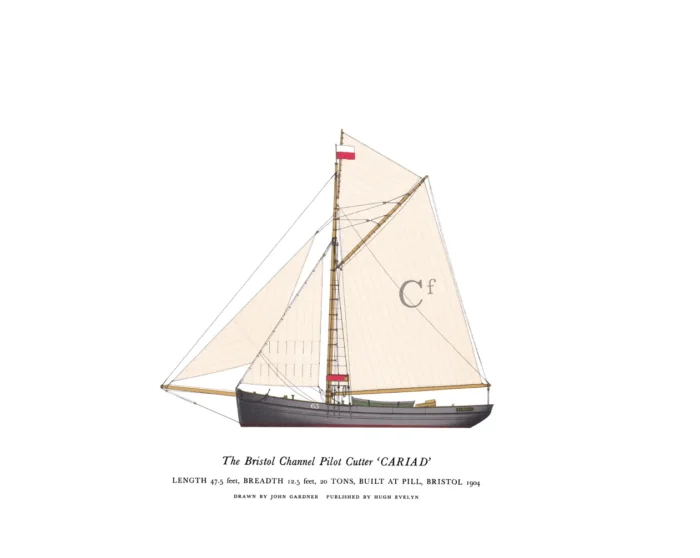Bristol Channel Pilot Cutter, Cariad
Original price was: £30.00.£20.00Current price is: £20.00.
Pilot Cutter; 1882
Built: E Rowles at Pill, Bristol, UK;
Built: 1904; Registered: 1905;
20 tons; Leingth: 48 ft (15 M); Beam:13 ft (4 M);
Published 1968 © Hugh Evelyn; artist John Gardner (1930-2010).
c. 43 x 35 cm. (17″ x 14″) on high white matt cardstock 133 g/sm².
Shown here is a scan of the print.
This is a LARGE print; see mail costs at Shipping & Returns.
Ship detail below
In stock
- Satisfaction Guaranteed
- No Hassle Refunds (see Shipping and returns)
- Secure Payments
Description
Bristol Channel pilot cutters took pilots down channel to incoming ships or picked them up off outgoing vessels. Their station was usually in the neighbourhood of Lundy, although they ventured as far out as the Tusker Rock. This work was performed all the year round in all weather conditions in waters that are as restless and disturbed as any seaway in Europe, and which has the second largest tidal range in the world. This made great demands on the pilots and their boats. These cutter-rigged vessels were superb sea-boats and were among the most efficient and highly developed of all working sailing craft. The pilot cutter evolved from the trawler. The Cariad is a good example of one of the later more highly developed types of pilot cutters. She is handsome and the snug gaff-cutter rig with jackyard topsail will appeal to many long accustomed to the clinical appearance of the triangular sail plan. Her mast is stepped well back from the stem, keeping weight amidships and making for easy motion in a seaway. The absence of reefing points on the mainsail shows that these vessels were equipped with the Appledore roller reefing gear, a wormed wheel at the mast which, when turned by a small handle, rotated the boom and so rolled up the sail. This action was performed while sailing and dispensed with the need for bringing the vessel head to wind. The whole operation could be performed by one man. This was useful on a pilot cutter which was frequently sailed short-handed. A sturdy punt was carried on deck and manhandled aboard and launched through a space made by removing sections of the bulwarks.
Additional information
| Dimensions | 44.5 × 35.5 cm |
|---|




